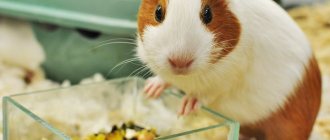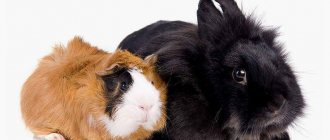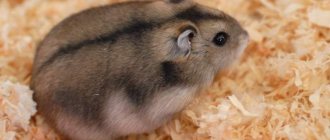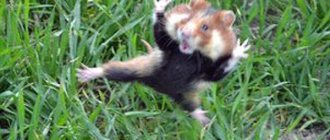- Mom, mom, let's take the cat. Well, please, or a dog. Vanya has a cat, Nastya has a hamster, and Dima was given a puppy. I also really want someone for myself. I will take care of the animal, I promise...
⠀
Your child finally won, and you said “okay”? Now you have a difficult task - to decide which pet is best for your child to have in the apartment, so that the repairs do not suffer and worries do not increase much.
⠀
Let’s say right away that the repair may survive, but it will definitely add more hassle. Because you will have a new family member with his own character and needs, most likely not matching your expectations.
⠀
Therefore, it is better to spend more time, but choose a suitable and in every sense “comfortable” pet.
Pets and Children: The Benefits of Communication
Of course, you worry that everything will fall on your shoulders. And you are doing the right thing. Regardless of the child's age, you must be prepared for this. Children are children and they are used to their parents taking care of everything. Yes, the child will play with his pet and take care of it as best he can, but you still have to control everything.
⠀
But, despite all the difficulties, you made the right decision. Pets have a positive effect on the development of children and play an important role in education. Children who grow up next to animals become more responsible and self-confident, are able to empathize and understand others, are distinguished by a caring attitude towards nature and a stable psyche.
⠀
So let's not waste time and start introducing you better to our furry little brothers.
More exotic options
Iguana, chameleon, snakes, turtles
Reptiles are suitable for those who have limited space, but not limited finances. They are quite difficult to care for and are more suitable for those who want something exotic rather than a friend. They will allow themselves to be stroked and scratched, but you should not hope for affection.
Ferrets, raccoons, foxes and other wild animals
Extremely attractive. But still, they should not be considered completely domesticated. Their behavior is less predictable; if a pet becomes ill, it is more difficult to find a qualified veterinarian.
aaron007/Depositphotos.com
What kind of pet is best to have in an apartment for a child?
For an apartment, choose a small pet and take into account the characteristics of its maintenance, as well as the age and temperament of the child.
Rodents
If you don’t like them or, even worse, are terrified of them, skip this paragraph right away. Don't mock yourself. Well, if the word “mouse” doesn’t make you shiver, read on. In fact, these are very cute animals.
Hamster
Cute fluffy balls from white to dark gray with eyes that look like black beads. Your child will be delighted with this funny animal and will begin to carefully arrange a house for it. You will have to spend a little money on a cage, a sleeping house, a water bowl, a feeder, a running wheel and a filler.
In general, a hamster will not cause much trouble. All that is required of you is to regularly change the filler in the cage if the child forgets. And also make sure that the animal does not run around the apartment unattended, otherwise furniture and things may be damaged.
⠀
Hamsters live on average from 2 to 4 years. They eat a little. They are fed oats, dried fruits, nuts, seeds, carrots and even bread crumbs. And in pet stores you can buy ready-made balanced food.
⠀
If we talk about disadvantages, then perhaps it is the small size. If handled carelessly, the hamster can be accidentally harmed. And sometimes he can bite if something doesn’t suit him.
⠀
Popular breeds of hamsters: Syrian, Djungarian, Campbell, Taylor, Radde, Roborovsky, albinos.
Guinea pig
Guinea pigs are no less adorable than hamsters. These unusual animals conquer hearts with their “live” faces and big, kind eyes, like those of horses.
⠀
A guinea pig will be a great friend for your child, but you will have to take care of it: often change the filling in the cage, feed it with a variety of foods, store hay for the winter, and even give it vitamins. Yes, yes, you will have to take care of all this.
You will also need to buy a cage and other accessories, just like for a hamster, just grab a special brush for the fur.
⠀
Pigs live from 5 to 8 years. They are kind, smart, easy to train, and always recognize and greet their owners with amusing grunting and whistling.
⠀
Popular breeds of guinea pigs: Abyssinian, Agouti, Alpaca, American Crested, Himalayan, California, Caronet, Curley, Panda, Kui, etc.
Rat
Don't be alarmed, decorative rats have nothing in common with wild ones. Outwardly, they are more similar to mice, only larger. Rats, like hamsters and guinea pigs, come in a variety of colors.
If you want a calmer and lazier pet, choose a male. He will not demand communication, unlike a female individual. Females, on the contrary, are so agile and smart that they can easily get out of the cage and “go about their business,” which is fraught with consequences.
⠀
Rats are very smart and easy to train. The child will give his pet a name and can even teach him to follow commands if he is patient.
⠀
For rats you will need everything that you need for hamsters and guinea pigs.
⠀
Types of decorative rats: standard, manx, dumbo (Mickey Mouse), self, agouti, topaz, fawn, etc.
Snake
The animal attracts with its exoticism, but few people would want to keep a reptile at home. Snakes delight some people and become objects of reverent love for them, while others are disgusted or terribly frightened. And this fear is well founded: purchasing poisonous snakes is not something to joke about.
It is best to opt for safe reptiles, such as:
- corn snake;
- royal python;
- rainbow boa constrictor;
- imperial boa constrictor;
- patterned runner;
- king and milk snakes.
All these types of snakes are not aggressive and are completely safe even for beginners.
To keep such a pet comfortably, you only need a terrarium, which can be used as an ordinary aquarium equipped with an incandescent lamp. The last condition is mandatory, since snakes are cold-blooded creatures and a constant source of heat is vital for them. Also, a layer of soil or sand should be placed on the bottom of the aquarium.
Pet snakes need regular hydration: the pet’s home is sprayed, and a drinking basin with cool water is placed inside, which is recommended to be changed every day.
If desired, you can place several branches in your pet’s “house”, along which the snake could crawl freely, enjoying its leisure time. And when miniature vines appear in the terrarium, your creeping pet will be delighted, because snakes love to swing on branches, even if they do it slowly.
You can feed your snake chicken or quail eggs, but it is also recommended to pamper your creeping pet with more delicious dishes:
- lean beef;
- chicken;
- pieces of fish;
- snails without a shell.
A snake raised in captivity is gradually accustomed to these delicacies. Wild reptiles prefer insects, small rodents, lizards, birds, toads, and earthworms. It is best to give your pet frozen food, and defrost it in air and dry it before feeding it directly.
Young snakes are fed once every 3-4 days, and adults - once a week. During the molting period, as well as when changing habitat or owner, the animal can “declare” a long hunger strike (up to several weeks).
The best breeds of small dogs for children and apartments
If you still don’t like the idea of rodents, then take a closer look at our close friends – dogs. Of course, there will be more hassle, but believe me, it's worth it. Stories about the devotion of dogs penetrate the hearts and leave no one indifferent.
⠀
In addition, the dog will teach the child:
- be responsible and self-confident;
- love to run and play outdoors;
- maintain a daily routine - get up early and go to bed early;
- be generous and share;
- to be truly friends.
⠀
Check out the best dog breeds for kids. These breeds are ideal in size for keeping in an apartment, according to breeders and parents.
Poodle
Poodles come in different varieties: black, white, red. And also – tall – up to 60 cm, medium – up to 45 cm, dwarf – no more than 28 cm. These dogs are very kind, smart, loyal and playful. Even if your child is still small, you can safely get a poodle. He will never offend the baby and will become his best friend from an early age.
In addition, the funny curls of poodles hardly shed and do not provoke allergies in sensitive people.
Pug
Pugs are great with children. They are friendly and affectionate. These dogs do not like to walk outside often or for long periods of time. They prefer soft bedding and tasty food. So you don’t have to worry about your daily walk at 6 am. And that's why pugs are so plump and clumsy.
Pugs also snort funny, sneeze and make funny sounds, so they will definitely become a source of endless positivity and good mood for your family.
Welsh Corgi
If you just touch the fur of this dog, which looks like either a fox or a bear cub, you will no longer want to let him go. These dogs are very sociable, kind and smart. They get along well with children of different ages and enjoy frolicking with them.
Corgi will become your child's friend with whom he will play and expend his irrepressible energy.
⠀
The disadvantages of this breed are its high cost (from $600) and almost year-round shedding.
Jack Russell Terrier
Well, and, of course, where would we be without these merry fellows? Remember Milo the dog from the movie "The Mask" with Jim Carrey? This is the Jack Russell Terrier - a battery dog that can tire even the most restless child.
Jack Russells are ideal dogs for apartment living. They are small, can relieve themselves in a tray (if you train them), do not cause allergies and are easy to care for. But at the same time, they are very playful and energetic and you need to take long walks with them. Otherwise, together with the child, they will destroy the entire apartment.
Aquarium
You can put fish, snails, newts, frogs, turtles, and shrimp in the aquarium. And they are all quite bright, but most importantly, silent. This is convenient if your head is already spinning.
If the circumstances are successful (temperature, water composition, lighting), it will be enough to change the water and clean the aquarium only 2-3 times a month. In addition, the aquarium is a beautiful element of the interior.
There are several “win-win” fish that are not too demanding to keep: guppies, zebrafish, gourami, several types of simple catfish. It is also worth paying attention to shrimp: the simplest cherry shrimp are quite unpretentious and reproduce well.
An aquarium is suitable for your family if:
- you have very little time, but you want to have something living in the house;
- you have to leave home for a long time. After a long vacation, the aquarium, of course, will have to be cleaned especially carefully, but the inhabitants will not miss you;
- One of the family members is allergic to wool, down and feathers.
An aquarium is not suitable for your family if:
- you want to get some kind of return from your pet. The maximum you can count on: the fish will remember the feeding ritual, but they will not become attached to you personally at all.
Start an aquarium if you want your child to:
- became interested in nature;
- became more observant.
A similar option is an aquarium without water, but with Achatina, a huge snail.
prill/Depositphotos.com
The best cat breeds for children
Or maybe it's a cat? No need to walk or train, he purrs pleasantly, hypnotizes with his magical gaze and amuses with his jokes. The only accessories you need are a plate, a tray and a scratching post.
⠀
What a cat can teach a child:
- be mobile and flexible;
- love jumping and sports;
- find your own entertainment at home;
- explore the world with meticulous curiosity;
- Healthy food;
- maintain personal hygiene.
⠀
Do you know why a child learns all this from a cat? That’s why they will be friends, and children always take their cues from their friends.
⠀
Check out the best cat breeds for kids.
Angora
In addition to their luxurious, stately appearance, these cats are distinguished by their soft character, playfulness and tenderness. An Angora cat will become your child’s second mother, who will lull him to sleep with her pleasant purring and a friend with whom he will have fun.
British
Plush cats with big eyes. They have a balanced character. Affectionate, but unobtrusive. Get along well with children and other pets. They become very attached to their owners and happily walk outside with a leash, like dogs.
Take a British dog for your child, and he will happily play with him for days and sleep soundly in his arms at night.
Abyssinian
These are cheerful, emotional cats who can’t sit still, just like children. They are easy to train, so they quickly understand what is possible and what is not.
An Abyssinian cat can be adopted for a child of any age. She is non-aggressive and calmly tolerates children's pranks. The downside of this breed is the cost – from $300 and above.
⠀
In fact, there are many more “family” breeds of cats and dogs than we have described. You can Google or consult with friends and choose the right pet.
⠀
You can also get fish, birds or reptiles. But will your child be interested? Therefore, weigh everything carefully first.
Parrots
In addition to the classic budgies, lovebirds, cockatiels, and large ones such as grays, cockatoos, and macaws are widely kept at home. The latter are distinguished by the greatest intelligence and intelligence.
Birds are right for your family if:
- you want an independent pet - parrots take care of their own cleanliness and practically do not smell, and the cage should not be cleaned too often;
- you are ready to train your parrot - the more attention you pay to the bird, the smarter it will be.
Birds are not suitable for your family if:
- you cannot stand noise - a parrot can scream quite shrilly all day long, even at five in the morning;
- There are very young children in the house - parrots can bite quite painfully.
Get a bird if you want your child to:
- became more attentive and observant;
- I found an interlocutor in someone other than you - you can teach any parrot to speak.
tankist276/Depositphotos.com
Ferret or raccoon
If you don’t want cats, dogs, rodents and birds, and you don’t know what kind of animal to get, then the choice may fall on a ferret or a raccoon.
This is no longer uncommon in recent years! Tame animals are very cute and attractive; their playful disposition makes them actively move, run, jump and hide in secluded corners, exploring the surrounding space. Their curiosity is insatiable, so you can catch them in the most unexpected places. Sometimes this is very amusing, and sometimes it becomes a big problem, because you have to constantly monitor the ferret.
Despite its cute appearance, the ferret is a predator and relies more on its sense of smell than on its sight, so it may not notice heights and fall. Among other things, they, like cats, love to tear up furniture and carpets. If the ferret has not played enough in the evening or has not walked around the apartment, most likely, early in the morning he will wake up the household with noise and mayhem in the cage.
Before you decide to get a raccoon, you should make sure of the possibilities of keeping it. This is an animal that is not able to live comfortably in a small apartment. He needs a spacious enclosure and a walking area. To do this, you can select a separate room in which the housing itself is installed, wires are removed, as well as heavy and breakable objects.
Training a raccoon can be very difficult; during the breeding season, they instinctively begin to mark their territory, filling the room with an unpleasant odor. It is quite problematic to teach a pet to go to the litter box, which cannot but affect the sanitary component.
A raccoon is a wild animal, you can't take that away from them, so they can scratch or bite badly. It is impossible to wean him from this habit. Moreover, in nature they are nocturnal, and therefore in captivity they are active at night.
Parrot
Not everyone will like living next to a parrot, although at first glance it may seem that they do not cause any trouble, this is not the case.
They communicate by shouting, you will have to forget about silence. They are not very clean, there is a lot of dirt from them. They easily cause damage: they spoil things and other household items.
But being around them will never be boring. Parrots are sociable, trainable, and can be taught various tricks.
In addition, they are long-lived pets. Depending on the species, life expectancy can range from 10 to 100 years.
Features of care . Parrots are easy to care for. Before buying a pet, you need to prepare its cage, toys and stock up on quality food. The only difficulty is cleaning.
Parrot owners will have to regularly clean the cage and wash the bird. Parrots do not really like to swim, and this can also be difficult.
Giant snails (Achatina)
Any plastic container or miniature aquarium will be suitable as a home for such an exotic pet. The main condition is that the house must correspond to the size of its occupant and grow with the snail.
To prevent the mollusk from suffocating, several holes need to be made in the lid that covers the container, which will provide air access. A special soil should be poured onto the bottom - a mixture of peat and crushed coconut fiber. The substrate is moistened with a spray bottle, and it does not need to be renewed for 2-3 months.
The snails are fed with lettuce and dandelion leaves, and are also given carrots, pumpkin, cabbage, cucumbers, and watermelon. Interestingly, these snails eat dry food for aquarium fish with no less pleasure. The main menu must be supplemented with fertilizers for Achatina. The ideal option is crushed eggshells.
Rat
These animals are kept in metal cages with fine wire mesh. Bedding and toys should be placed inside. If it is not possible to walk your pet, it is better to place the rat in a multi-story cage and equip it with ropes and ladders so that the animal has room to roam. Wood fillers and large sawdust are suitable as bedding. The cage needs to be cleaned as soon as it gets dirty and has an unpleasant odor.
Rats are very active animals, so they need to be let out for a walk from time to time. At this moment, the animals require special attention, since they gnaw everything that gets in their way, and give special preference to wires.
As for feeding, it is best to use ready-made formulas. The rodent also needs special briquettes for grinding down its teeth. If it is not possible to purchase such an item in a store, you can replace it with a branch of an apple or plum tree.
Benefits of keeping animals in a home with young children
Many parents, thinking about what kind of pet to get their child and whether it is worth doing it, have repeatedly replayed in their imagination the most unpleasant “side effects” that are characteristic of living side by side with an animal. Of course, when you get a pet, you may encounter such unpleasant phenomena as a specific smell, damaged wallpaper and furniture, wool on carpets and things. However, the benefits of having a pet in the house are still much greater. After all, he can not only become an excellent friend for a child, but also helps his mental, social and mental development, increases physical activity, fosters independence, kindness, sensitivity and other important human qualities, opens up new opportunities for communication, relieves feelings of loneliness and, Of course, it helps to build harmonious relationships between all family members.
fennec
The fennec fox is a species of miniature fox with very large ears. In their natural environment, fennecs live in deserts.
The animal's body length reaches 40 cm, height at the withers is 22 cm. The fox weighs quite a bit - about 1.5 kg. With such small sizes, the animal’s ears grow up to 15 cm.
A properly socialized animal is very attached to its owner. Fenech will not show aggression towards strangers. However, this is a very active animal that requires constant attention. This intrusiveness may make it difficult for him to get along with other pets, who will try to avoid him.
You should not let the animal walk on its own: the fenech can very quickly dig under the fence or run away.
Dwarf rabbit (loose-eared baby)
English name: Dwarf rabbit.
A small, incredibly cute and fluffy animal, its behavior more similar to a kitten. The breed is exclusively decorative, does not live in the wild, the process of breeding it took more than 20 years and the species was finally formed in 1918. The ancestor of the dwarf rabbit is considered to be the Polish white rabbit. The miniature animal itself does not exceed 15-20 centimeters in length and weighs from 1.5 kilograms. It has characteristic recumbent “ears” about 5.5 centimeters long. Like all hare breeds, he prefers to eat carrots, cabbage, and lettuce.
You can see how cheerful and active this little lop-eared rabbit is by watching the video.
Birds
Recently, people are increasingly choosing birds as pets. Who is better to have in an apartment? Preference should be given to small breeds of birds: budgies, canaries, finches, cockatiels and the like.
They are very beautiful and bright, they lift your spirits with their appearance and singing, sometimes you can even talk to the bird. But, of course, pressing him close and rubbing his ear won’t work. Most often, canaries or parrots are chosen for home keeping. They are not demanding in care; it is enough to ensure that there is always fresh water in the drinking bowl, and food in the feeder, and clean the cage in a timely manner. It is worth noting that these birds live quite a long time - from 15 to 20 years.
The disadvantages include their early waking up and not always appropriate trills. However, fixing this is as easy as shelling pears: if you want to sleep longer in the morning, cover the cage with thick dark fabric in the evening.
Hedgehog
A hedgehog is a non-standard option for keeping a home. They don’t breed the usual hedgehogs, but African white-bellied ones.
Adults reach 30 cm and weigh less than 1 kg. In captivity, hedgehogs live up to 10 years.
Hedgehogs are active animals and are nocturnal. The animal is self-sufficient, and you should not expect special affection from it for its owner. The hedgehog needs time to get used to the person; at first he will curl up into a ball.
Hedgehogs are very smart animals. They are able to remember their nickname, and some can even show their owner what they want with their movements. Despite developed stereotypes, hedgehogs are predators and require a protein diet. They need to eat worms and crickets, not apples.
Gerbil
Gerbils are easy to care for and good for children who don't want to be involved. Gerbils have a relatively short life of about two years. They have a standard diet similar to that of rats and hamsters: rodent pellets and food blocks, as well as some additional seed mixtures. Gerbils are usually not aggressive, very fast and their great activity can arouse the interest of a child who will be happy to watch them.
Chinchilla
The list of the most unpretentious pets would not be complete without this cute furry animal. Contrary to popular belief, keeping chinchillas is not at all a labor-intensive task. To make the animal feel comfortable, you can limit yourself to fulfilling several mandatory conditions:
- recommended cage size – 80x70x60 cm;
- inside - at least 2 wooden shelves located at different levels;
- presence of a wooden house;
- the bowl should be hinged (it is better to secure it above the shelf), deep, metal;
- Wood filler or sawdust should be poured onto the bottom of the cage.
A significant advantage of this pet is the absence of odor, which eliminates the need for the owner to clean the cage daily.
You can feed your chinchilla once a day, preferably in the evening. The simplest solution is to give the animal special food, adding a pinch of hay or dried leaves to the main diet every 1-2 days. You should sometimes pamper your pet with such delicacies as:
- apples;
- carrot;
- hawthorn;
- rose hip.
Seeds, nuts, raisins, dried apricots, and candied fruits should be excluded from the diet.
Small mouse lemur (dwarf)
They are dwarf poppies, lat. Microcebus.
But this is a domesticated representative of the recently wild nature. Its homeland is the island of Madagascar. The world's smallest primate has an average weight of about 50 grams, with a body length of 25 centimeters, of which ten or more centimeters is a bushy tail. The animal prefers a nocturnal lifestyle, therefore, nature endowed it with a brown-gray color, large eyes and pointed locator ears, capable of sharp “turns”. Lemurs feed mainly on fruits and small insects (although an ordinary kitchen cockroach is unlikely to suit them).
Video from which you will learn how the gray house lemur lives.
Puma
Another unusual pet is the puma. The feline predator is a beautiful and noble animal.
Habitat: North and South America. The length of the animal can reach 190 cm, and weight - 110 kg.
Keeping a cougar in human housing is very difficult. The cougar is a wild animal and requires a lot of space. In addition, the puma needs a large amount of meat every day.
Nevertheless, there are known cases of successful domestication of this species. Thus, the Dmitriev couple from Penza lives in the same apartment with the puma Messi. The big cat can even carry out a dozen commands.











